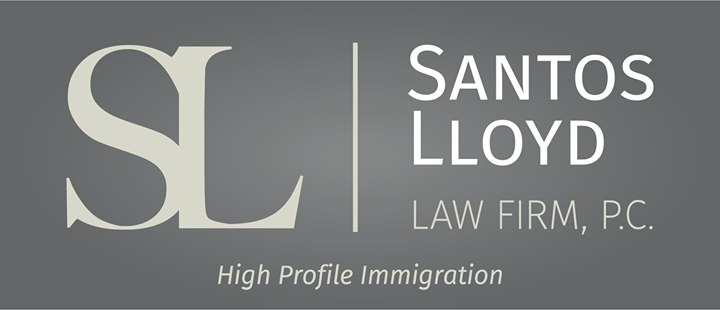Cómo evitar abandonar el estatus de LPR

Click here to read this article in English
Ahora quiere visitar a su familia en el extranjero, llegó el COVID, y luego su madre se enfermó, y después de todo eso, solo necesitaba unas vacaciones relajantes en una playa de Portugal, y lo que se suponía que iba a ser un viaje de 2 semanas se convirtió en una estancia de 8 meses. ¿Está en peligro de que los oficiales de la patrulla fronteriza de los EE. UU. piensen que abandonó su estatus de residente permanente legal (LPR)? Si es así, ¿qué hacer?, ¿cómo puede pasar un período prolongado fuera de los Estados Unidos, sin abandonar su estatus? Continúe leyendo para averiguarlo.
No hay un período de tiempo fijo que desencadena el abandono, pero se considera que los LPR buscan readmisión si han estado ausentes de los Estados Unidos por un período continuo de más de 180 días. § 101(a)(13)(C)(ii). Aunque un LPR que regresa de una visita de más de 180 días está sujeto a motivos de inadmisibilidad y puede ser cuestionado por el posible abandono de su residencia, esto generalmente sólo surge cuando el LPR se ha ido por más de un año.
Cuando un LPR ha estado en el extranjero de forma continua durante más de un año, se presume que se ha producido el abandono. 8 CFR § 211.1(a)(2). Pero esto se puede solucionar si el LPR demuestra que él o ella ha mantenido suficientes vínculos con los Estados Unidos y que nunca tuvo la intención de abandonar la residencia. Si encuentra que ha estado fuera de los Estados Unidos por más de un (1) año, se recomienda que solicite un
permiso de reingreso. Un permiso de reingreso establece que no tuvo la intención de abandonar el estatus y le permite solicitar la admisión a los Estados Unidos después de viajar al exterior por hasta 2 años sin tener que obtener una visa de residente que regresa. Los permisos de reingreso normalmente son válidos por 2 años a partir de la fecha de emisión. Para obtener un permiso de reingreso, presente el Formulario I-131, solicitud de documento de viaje. Si es posible, debe presentar esta solicitud con bastante anticipación a su viaje planificado. Además, no puede presentar un Formulario I-131 para obtener un permiso de reingreso a menos que esté físicamente presente en los Estados Unidos cuando presente dicho formulario. También debe tomar sus datos biométricos antes de salir de los Estados Unidos; la biometría no se puede hacer fuera del país. Sin embargo, si presenta el I-131 y completa sus datos biométricos, puede salir de los EE. UU. mientras el I-131 está pendiente y, si se aprueba, el documento de viaje se puede enviar a una embajada de los EE. UU. en el extranjero para que lo recoja en el país extranjero. No necesita un permiso de reingreso si estará fuera de los EE. UU.
menos de 1 año.
Si no tiene un permiso de reingreso para volver a ingresar a los Estados Unidos después de un período prolongado de ausencia, es posible que pueda argumentar que no abandonó su estatus y presentar evidencia para respaldar su argumento al oficial de patrulla fronteriza en el puerto de entrada de los EE.UU. La evidencia para respaldar que ha mantenido su estado durante su tiempo fuera incluye, entre otros, prueba de incapacidad médica; muerte de un miembro de la familia; pagos de hipoteca de una casa en los EE. UU.; empleo en una empresa estadounidense en el extranjero; una licencia de conducir emitida en el último año y que refleje la misma dirección que la registrada en el Formulario I-94, Registro de Entrada y Salida; el nombre y la dirección del empleador estadounidense y evidencia de que se ha pagado un salario dentro de un período de tiempo razonable; evidencia de matrícula de sus niños en una escuela estadounidense; evidencia de que la visita prolongada al extranjero fue causada por circunstancias imprevistas; evidencia de una fecha de terminación de viaje predeterminada, como la graduación o el vencimiento del contrato de trabajo; evidencia de haber presentado declaraciones de impuestos sobre la renta de EE. UU. en los últimos años; y evidencia de propiedad, ya sea real o personal, en los Estados Unidos. 9 FAM 42.22 N. 1.3.
Si no está seguro de si ha abandonado su estado LPR o si desea asesoramiento sobre viajes prolongados fuera de los Estados Unidos, comuníquese hoy con uno de nuestros abogados de inmigración altamente experimentados en el área.
Este blog no pretende ser una asesoría legal y nada aquí debe interpretarse como el establecimiento de una relación abogado-cliente. Programe una consulta con un abogado de inmigración antes de actuar basado en cualquier información que aquí lea.





